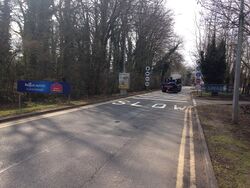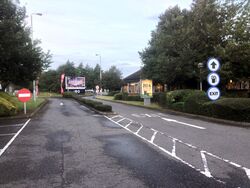Turn-in rate

The turn-in rate is a measure used to compare service areas, especially when debating whether a new one needs to be built.
It quite simply involves looking at what percentage of traffic on the motorway is stopping at the service area, and what percentage is choosing to drive by. This is easy to measure for an online service area, but is harder to calculate for an offline one.
While service areas don't like to publicise their figures, it has been suggested that the national average turn-in rate is around 12%. The earliest motorway services had a turn-in rate as high as 20%. A low turn-in rate can tell us one of three things:
- The service area may be in a position where nobody wants to stop. Heston, which gets 4%, is positioned very close to the start of the M4 in London. Likewise Thurrock (on 3%) is notoriously hard to get to.
- The service area itself may be unappetising, with drivers not wanting to stop there.
- The road may have too many service areas, so the customer demand is being spread thinly.
The benefit of using turn-in rate is that it's not influenced by how busy the road is. However, the type of traffic will still make a difference: HGVs tend to only stop when they need to, while a family car is more likely to take additional breaks. Turn-in rates also tend to be lower during peak hours where the majority of traffic is commuters, even if more people are actually stopping.
While turn-in rate is a useful method of comparing different service areas, it's not especially useful for each individual service area. They will need precise sales figures or car park occupancy rates to allow them to decide how to manage their site.
The first turn-in rate was calculated during the Bartlett Study. Staffordshire County Council had previously tried to do something similar by comparing the water consumption at Keele with the passing traffic, and they reckoned one in three vehicles were stopping there.
Same-side Multiplier

The same-side multiplier is the theory that, if a service area is positioned at a junction, the side of the road which is closer to the service area will have a higher turn-in rate. This has been calculated to normally be between 1.7x and 2x the turn-in rate on the other side.
A study in 1994 found that, at South Mimms, custom levels from traffic travelling east along the M25 were 1.78x higher than custom levels from traffic travelling west. Traffic travelling east only has to drive half way around the roundabout to get in, whereas traffic travelling west has to do almost a full lap.
The same study found that at Grantham North, custom levels were 2x higher from traffic travelling south than that which was travelling north. At the time the entrance was positioned directly on the A1 southbound but with signs telling northbound traffic to turn around.